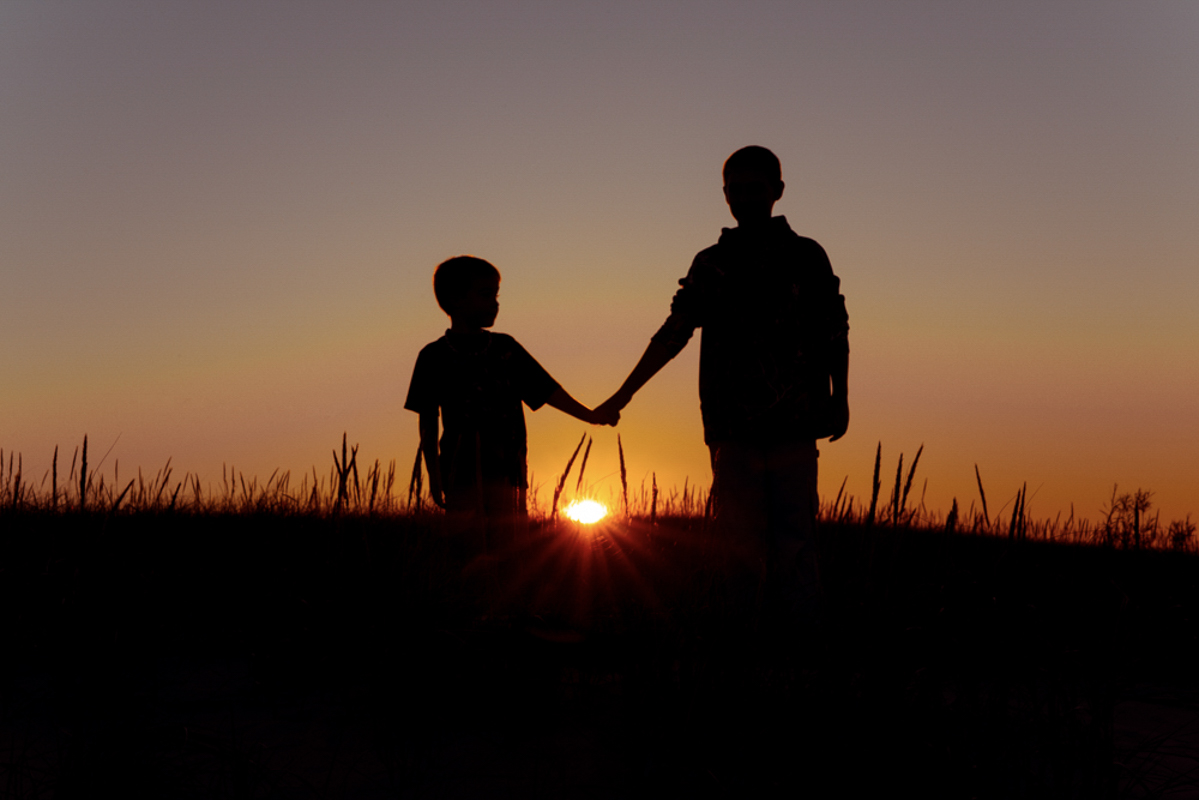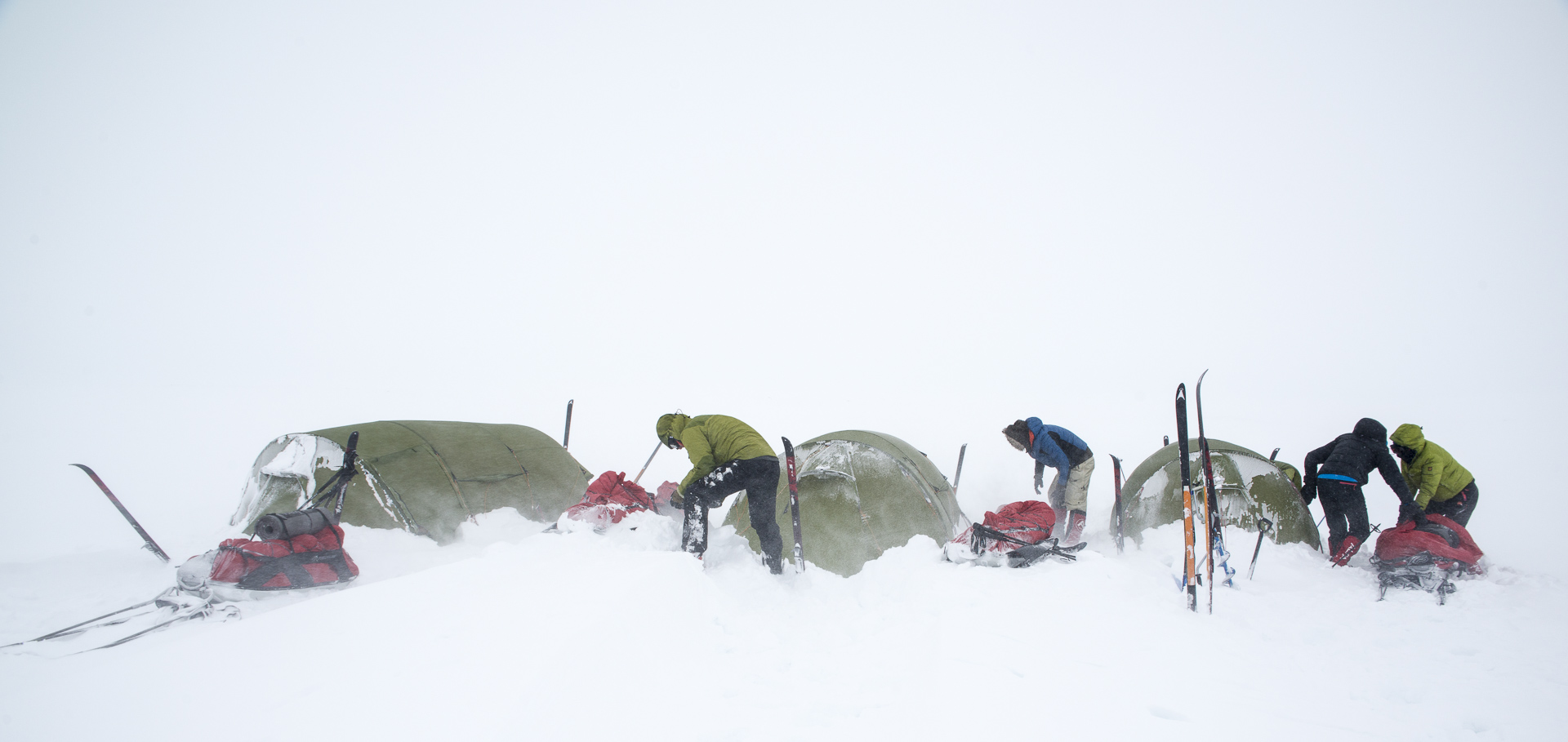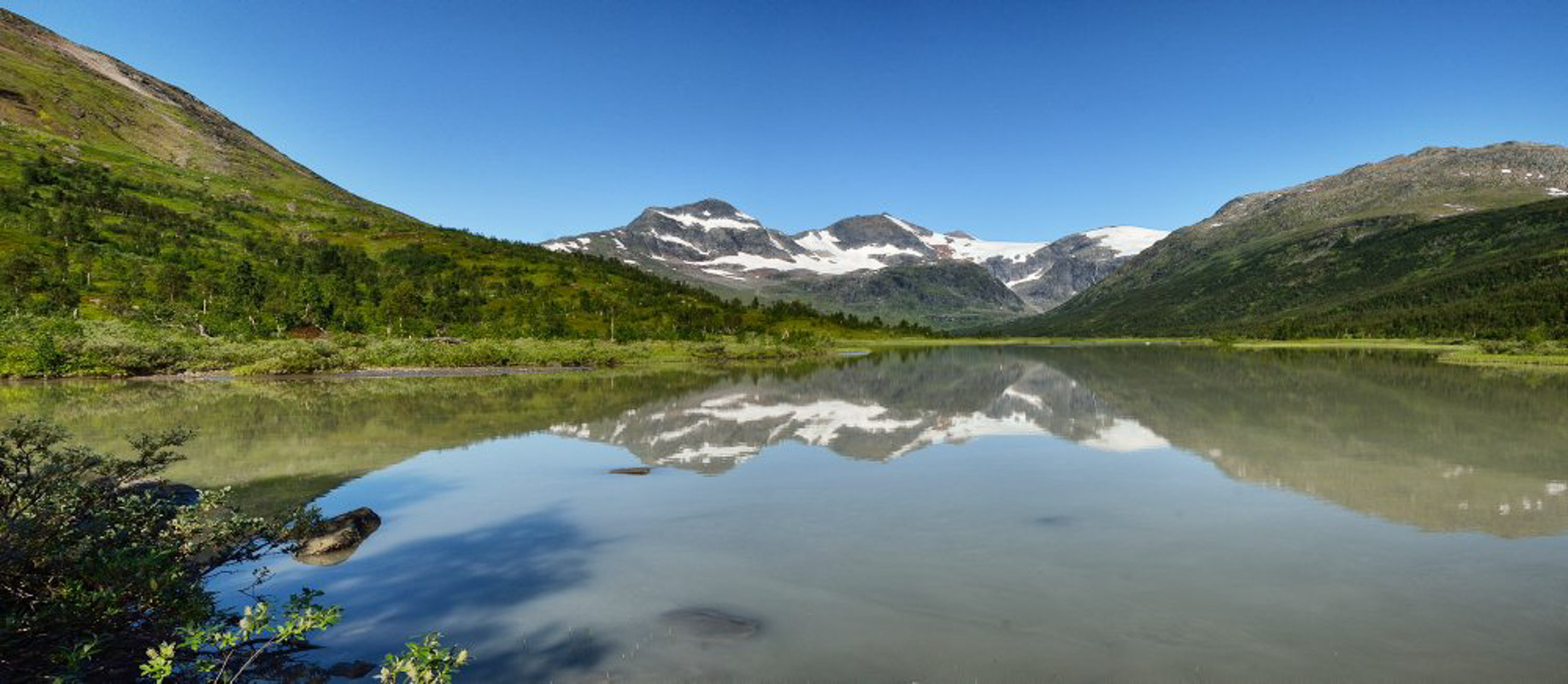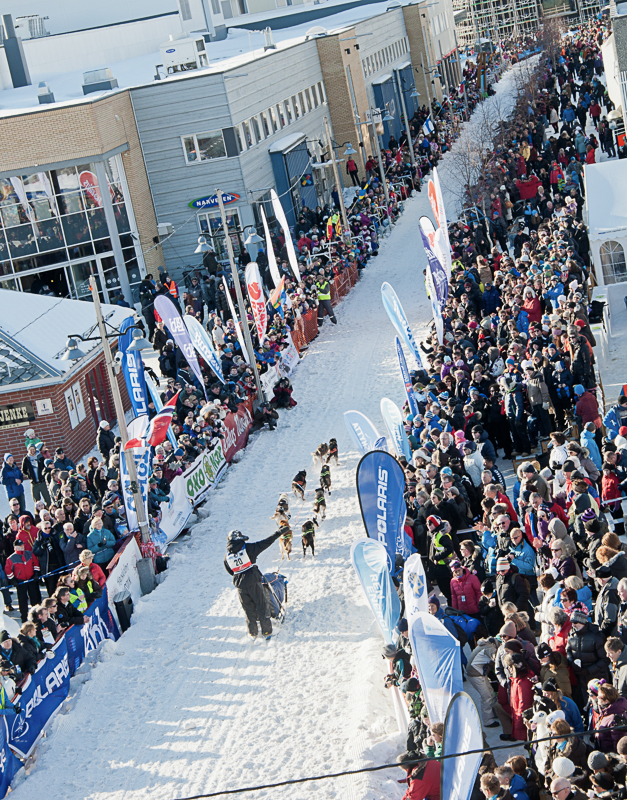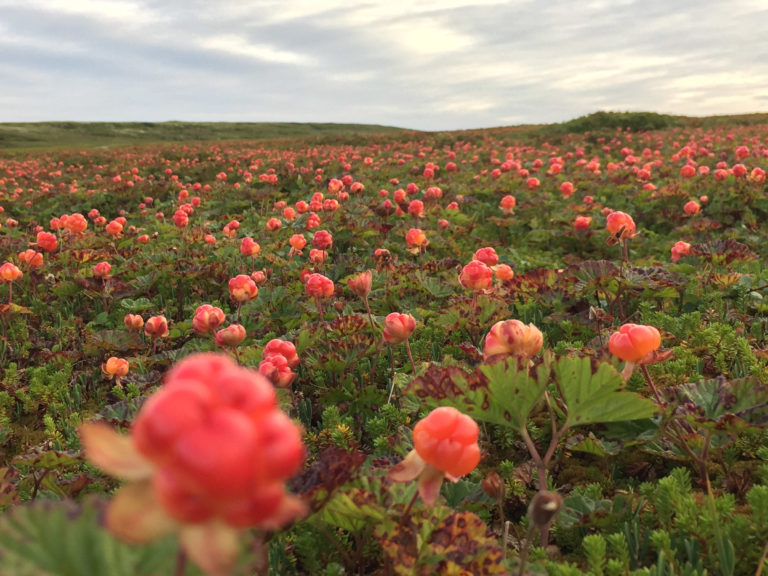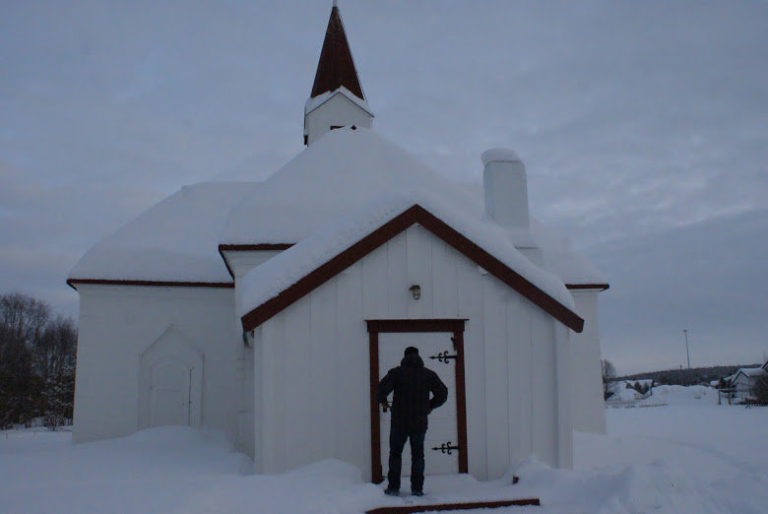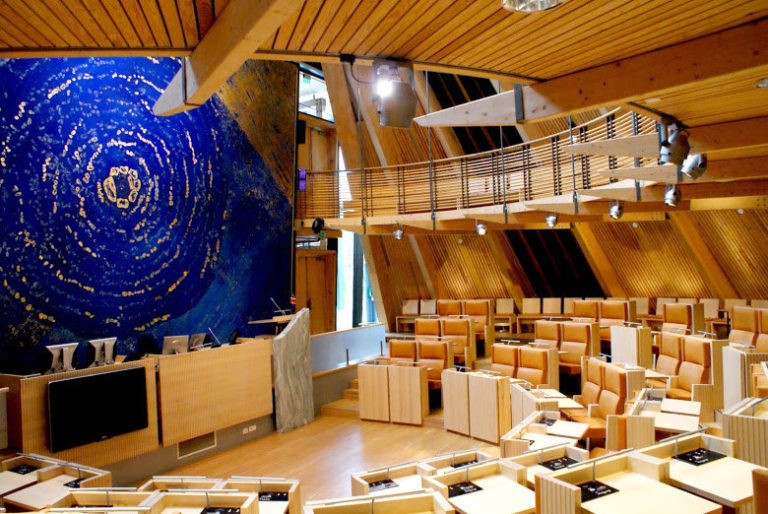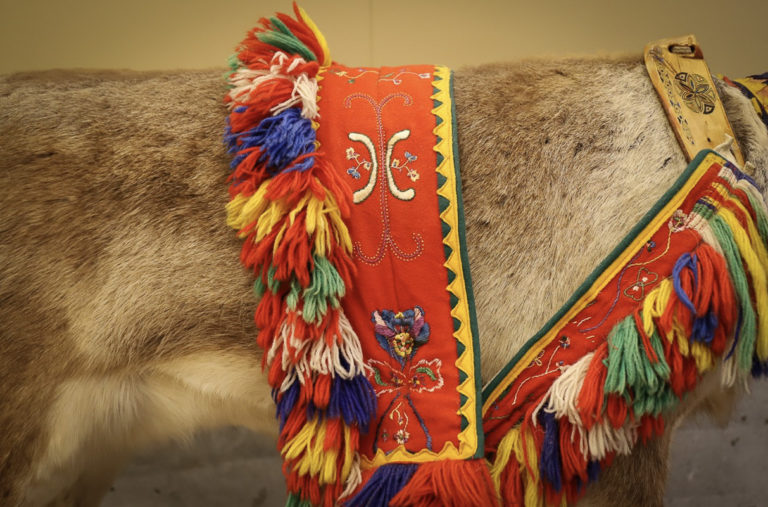Skiing across Finnmarksvidda is a historic exploration. To the untrained eye, the vast areas outside the trail may seem like virgin ground. You could not be farther from the truth. The plateaus here have been a place of life and activity for centuries. Want some inspiration? Read more about local history along the trail between cabins.
The tour starts at Øver-Stilla and “point zero”
Øver-Stilla, or “point zero”, is the starting point for the tour. This area became famous with the Alta controversy and police interventions at Stilla. At one point on 14 January 1981, as many as 1000 protesters were gathered at Stilla The reason for the protest went back almost 10 years. The original plans for what is the current power plant in the Alta river, was a dam, which would have flooded the Sami community of Máze (Masi). The community was protected in 1973, but the consequences of the development would still be considerable. Construction started in 1982, but the protests marked the beginning of a new Sami policy in Norway (SNL).
Early birds get the view of rock formations and sieiddit
From the historically important Øver-Stilla, the tour begins in the direction of Joatkajávri (Jotka) mountain cabin. If you are able to get an early start, and you want to get a feel for what things are like outside the trail, you can set your sights on Falkesteinen. In winter, snow and ice covers a lot of it, but the large rock formations that date back to the Ice Age are still visible. It has been said that the rock is en sieiddit (sacrificial rock from ancient Sami religion) from the rock worship, which was part of Sami religion.
The shortest route is across the lake
The shortest route is to go straight across the lake and follow the snowmobile tracks toward Stilla. A nice start if you want to take it easy. Shorter still – you can also drive to the end of the road, which will shave another hour off the time.
Joatkajávri is a public mountain cabin
The tradition of public mountain cabins in Norway dates far, far back. Actually, so far back that they are mentioned in the Gulating law. In Finnmark, the first one was built in the 1840s, and at one point, there were 40 different cabins around the county. Today, only three are in operation, similar to the original tradition, and you will be stopping by all of them on this tour. Along the way, you will meet people called “oppsittere”, the people who live at and own the cabin. The position is normally passed down in families, so too at Joatkajávri (Jokta) Fjellstue.
30 kilometres toward Mollešjohka takes you across the great lake
Once you are out the door, you follow the traile toward Mollešjohka (Mollisjok) mountain cabin. The trail you are on is used by snowmobiles, the odd dog sled and skiers. During the day, you will cross Finnmark’s largest lake, the Iešjávri. The name means Great Lake, and it is the 15th largest lake in Norway. With its location 390 metres above sea level, in the middle of Finnmarksvidda, you don’t have to worry about the ice melting until late in the spring.
Your wilderness is someone else’s place of work
Every day on tour, you are traversing through a landscape that has been and still is being used for reindeer husbandry. The sources are vague on when people started keeping reindeer, but there was likely a gradual transition from hunting to domestication. In this part of Norway, it is common to keep the reindeer up on Finnmarksvidda for winter grazing, before the flock is moved down toward the coast in the summer season. Reindeer sightings are not guaranteed, but they are not particularly rare. However, you should keep in mind that many people use this landscape for both work and leisure activities. What is wilderness to you, is someone else’s home or place of work.
Will there be northern lights?
Once you have crossed the lake, sparse birch woods tell you that you are back on terra firma. You are now approaching Mollešjohka. Early in the season, in February or early March, darkness falls more quickly than later on in the season. When evening falls, the light is very pretty. If the sky is clear, you can often see the northern lights dance across it. Once you reach the cabin, you will have skied 30 kilometres. Dinner is likely sounding very good.
Finnmarksvidda
Rough weather on Finnmarksvidda
If you visit Finnmarksvidda, you shouldn’t be surprised if the weather is… a lot. This area is the coldest in Norway, and even if you are staying in cabins en route, you should dress very carefully. February and March are still winter months, and while April is a little bit warmer, you should not be surprised if the April days still have a bit of a bite.
Frequently asked questions
Touring skis with bindings that allow sturdy boots. Some prefer to keep their skins on the last day down toward Ássebákti, if they are not feeling confident about slowing down in narrow tracks. Experienced skiers with good technique don’t have to do more than keep their skis waxed.
If you are not sure what this kind of tour entails, this is not the right place to start on your own. Instead, take a guided tour of the plateau and use what you learn to plan a future trip to explore winter activities on your own.
Alta Airport has direct flights to several other airports, including Oslo Airport.
Yes, simply book dinner, breakfast and packed lunch. Visitors are important to the oppsitters, and they are even more important for us ski enthusiasts.
24 kilometres to Gárdinii – Ravnastua
Today, you get away with only 6 km of yesterday’s leg. The trail takes you uphill in the beginning, until the rest of the trail is mostly flat, with some downhill sections. Over the course of the day, you cross Hundevidda, a rolling landscape with sparse birch woods and only a few, scattered buildings. A spectacular view. From the vast, open expanse, you can see well into Finland. If you are wondering which direction it is, skier’s right is usually the right one. Once you come down to Gárdinii (Ravnastua), the oppsitters are waiting to welcome you to their cabin. Firewood is normally welcome once night falls.
To Ássebákti (Assebakte) or Kárášjohka (Karasjok)
14 kilometres of skiing, which ends in a 6-kilometre downhill slope. A small bend at the start of the day brings you into the woods, and you are skiing along a trail, which for the first time on this tour, is surrounded by trees. Today, your goal is Kárášjohka, an unregulated waterway, excellent for those who love long hikes in the late summer or autumn – the river has plenty of fish.
If you want to make this leg longer, you can ski on the river all the way down to the centre of Kárášjohka (Karasjok). A visit to the architecturally beautiful and important Sameting, the Sami Parliament of Norway, is a must.
Going home
As previously mentioned, Máze (Masi) was at the core of what ended up as the Stilla protest. The community currently has a population of just over 200 people, a church and a small shop. The drive back to Alta can be long without a break, and Máze is the perfect place to stop.
Did you know?
- The song Máze, performed by Ella Marie Hætta Isaksen, is a protest song from the construction of a power plant in the Alta river.[CA2]
- Large parts of Finnmark and Northern Troms were set on fire during World War II. Some of the mountain cabins at Jotka were among very few buildings that survived the German “scorched-earth policy”.
- The ski route was originally constructed to transport police, doctors, pastors and tax collectors between communities (it has not been possible to verify stories that the tax collector was forced to take a detour).
- Contact Glød Explorer or Æventyr for local guides.
- Sofie Stiberg has written books about the different cabins mentioned in this article
Sources and specifications
The author has used a number of different sources as references for the text. This article was written for entertainment purposes and as inspiration for a better understanding of the historical and cultural significance of the areas you are traversing these days.



